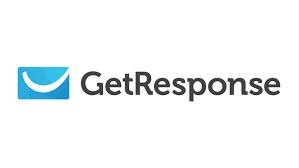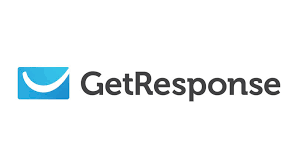My Story with GetResponse
As a digital marketer who helps small business owners get traction through funnels and email campaigns, I’ve tested a bunch of autoresponders. I landed on GetResponse when I needed more than just “send email → wait”-automation. I wanted a tool that could handle email sequences, landing pages, funnels, and still be manageable without requiring a tech team.
I started by using it for a local café client. We needed to collect email addresses in-store (via QR code), send a welcome series, then upsell events (coffee tastings) and cross-promote merchandise. I needed one system that could handle: opt-in forms, tagging (coffee vs. event vs. shop), autoresponders, and reporting. GetResponse stepped in.
Here’s how it stacked up — the good, the meh, and whether I’d recommend it for your audience.
What GetResponse Does Well
1. All-in-one platform
Rather than stitching together separate tools, GetResponse bundles email marketing + landing pages + automation + webinar/funnel tools all in one place. Many of its reviewers highlight this. For local business owners, fewer tools = fewer headaches.
In my café example: I built a simple landing page for the tasting event, captured emails, plugged them into a welcome sequence, and tagged them for follow-up offers—all within GetResponse.
2. Autoresponder & automation-friendly
GetResponse offers true autoresponders (i.e., triggers based on subscription time or action) and visual automation workflows. Their email-marketing/autoresponder feature page mentions event-based triggering and AI-tools. GetResponse
I used this to send: “Day 0: thanks for signing up → Day 3: here’s your discount code → Day 7: reminder + add-on offer” without manual intervention. That kind of sequence is gold for a small business owner who can’t babysit campaigns.
3. Good deliverability & reputation
One of the biggest fears for any small business owner is: “Are my emails actually getting delivered (not ending up in spam)?”
According to reviews, GetResponse claims a high deliverability and several third-party test sites give decent results. That gives peace of mind.
4. Ease of use (enough)
While not ultra-beginner simple, many users say the drag-and-drop editors and template libraries make it accessible.
For the café client, I built the landing page template in a few hours without needing a coder. That kind of turnaround is valuable when deadlines matter.
5. Ideal for growing businesses
If your audience includes small businesses that plan to scale (better email list, running events, selling merch), then a platform that offers automation + funnel tools + webpages makes future-proofing easier. Reviewers say this is a sweet spot.
My Verdict — Is It a Good Fit?
For small to medium brick-and-mortar business owners who have one or more of the following:
-
actively building an email list
-
running events, promotions, or workshops
-
selling products or services online as well as in person
-
want automation and funnels without juggling 3-4 separate tools
Then GetResponse is a strong recommendation.
For someone just sending a basic newsletter and using email very casually, it might be more power (and cost) than needed. In that case, I’d suggest comparing lighter-weight tools.
In my own hands: when I set up the café client sequence, we saw better engagement simply because the follow-up happened reliably (via GetResponse), and the initial investment of time was reasonable. The business owner didn’t need a tech background. That’s a win.
How I’d Recommend You Position It in Your Newsletter/Blog
Since your newsletter will cater to small business owners and you’ll talk about email marketing, funnels, etc., you can frame GetResponse like this:
-
“Here’s a tool that grows with you: starting from list building to full-blown funnel plus email automation.”
-
“One platform, fewer moving parts — ideal when you’re wearing multiple hats (owner/marketer/manager).”
-
“The trade-off: you’ll pay more as you scale, but you’ll also get more capabilities without adding extra tools.”
-
“If you’re just sending newsletters, maybe a simpler tool suffices — but if you plan to do lead magnets, follow-up sequences, product launches, this might be your ‘platform for the long run’.”
And then include your (opaque, natural) affiliate link, e.g.,
If you want to test it, here’s the link to use: GetResponse
Final Thoughts
In short: GetResponse strikes a nice balance between power and accessibility. It’s not the cheapest “plain-vanilla newsletter” tool, but for small businesses that are serious about using email & funnels (not just “send a monthly update”), it offers a lot of value.
If I were advising one of your clients I’d say:
-
Start with a modest plan.
-
Set up the essential autoresponder sequence (welcome → nurture → offer).
-
Use the landing page/opt-in tool to capture new leads.
-
Tag/segment leads early (e.g., “in-store vs online buyer”, “event attendee”, “newsletter only”).
-
Use the reporting/deliverability features to monitor open/click rates and refine.
Over time, as the list grows and offers expand, the more advanced features will become relevant. And with one tool handling email/funnels/pages, less juggling = less stress. - If you want to test it, here’s the link to use: GetResponse





